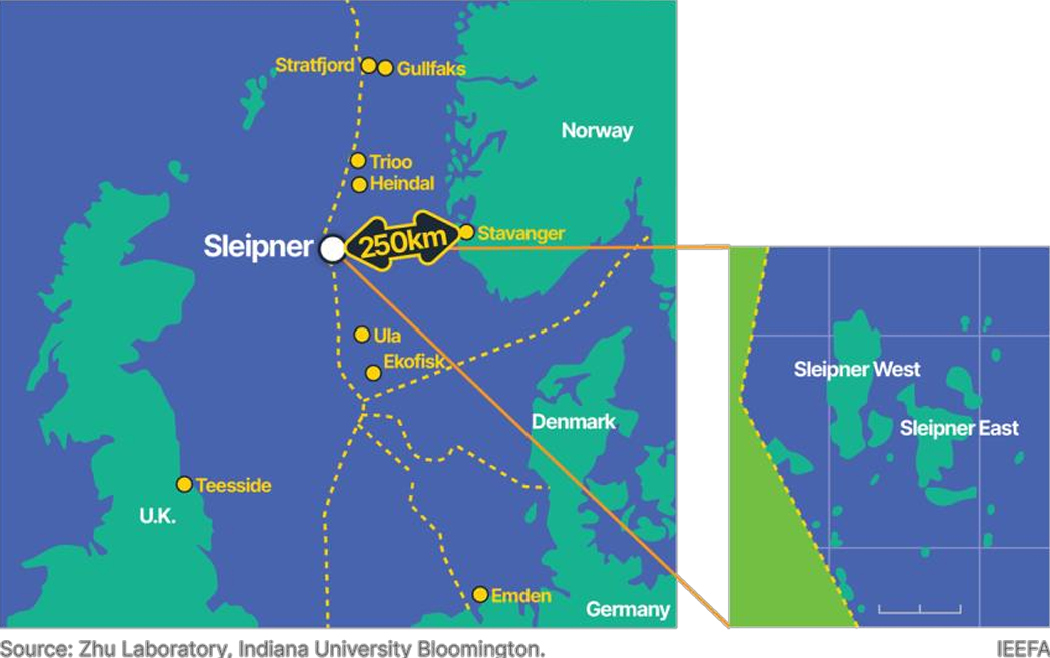CCS Sleipner Project, Norway CS
1/16
There's no tags or description
Looks like no tags are added yet.
Name | Mastery | Learn | Test | Matching | Spaced |
|---|
No study sessions yet.
17 Terms
Where is the Sleipner Project located, and what is its primary purpose?
North Sea, Norway; captures and stores CO₂ from natural gas extraction to reduce emissions.

When did it begin operation, and who operates it?
1996 (world’s first industrial-scale CCS); operated by Equinor.

Describe the three steps of CCS at Sleipner.
Capture: CO₂ separated from natural gas.
Transport: Compressed into liquid, piped to storage site.
Store: Injected 1,000m deep into the Utsira Formation (porous sandstone).

Why is CO₂ injected into a saline aquifer?
The aquifer is porous, capped by impermeable rock to prevent leaks.
How much CO₂ does Sleipner store annually?
1 million tons/year (equal to 350,000 cars’ emissions).
Why is Sleipner’s storage considered long-term secure?
CO₂ reacts with minerals over time, forming stable carbonates.
What policy made CCS cost-effective for Sleipner?
Norway’s carbon tax (introduced in 1991) made storing CO₂ cheaper than emitting it.
What is the cost per ton of CO₂ stored at Sleipner?
$17/ton (far cheaper than Norway’s carbon tax rate).
Name two achievements of Sleipner?
Proved CCS is technically feasible for decades.
Inspired projects like Canada’s Boundary Dam.
Why isn’t CCS widely adopted globally?
High upfront costs; most countries lack a carbon tax like Norway’s.
What is the "moral hazard" critique of CCS?
Risks prolonging fossil fuel use instead of transitioning to renewables.
What is Norway’s Northern Lights Project?
Expands Sleipner’s model to store 5M tons CO₂/year from European industries (2024+).
How does Sleipner support the Paris Agreement?
Shows CCS can help achieve net-zero for hard-to-decarbonize industries (e.g., cement).
How much CO₂ has Sleipner stored since 1996?
25+ million tons (as of 2024).
What is the Utsira Formation’s total storage capacity?
600 billion tons (10,000+ years of Norway’s emissions).
Compare Sleipner to natural carbon stores (e.g., peatlands).
Both sequester carbon, but Sleipner is engineered vs. peat’s natural process.
How does CCS link to energy security?
Allows fossil fuel use with lower emissions, but may delay renewable transitions.